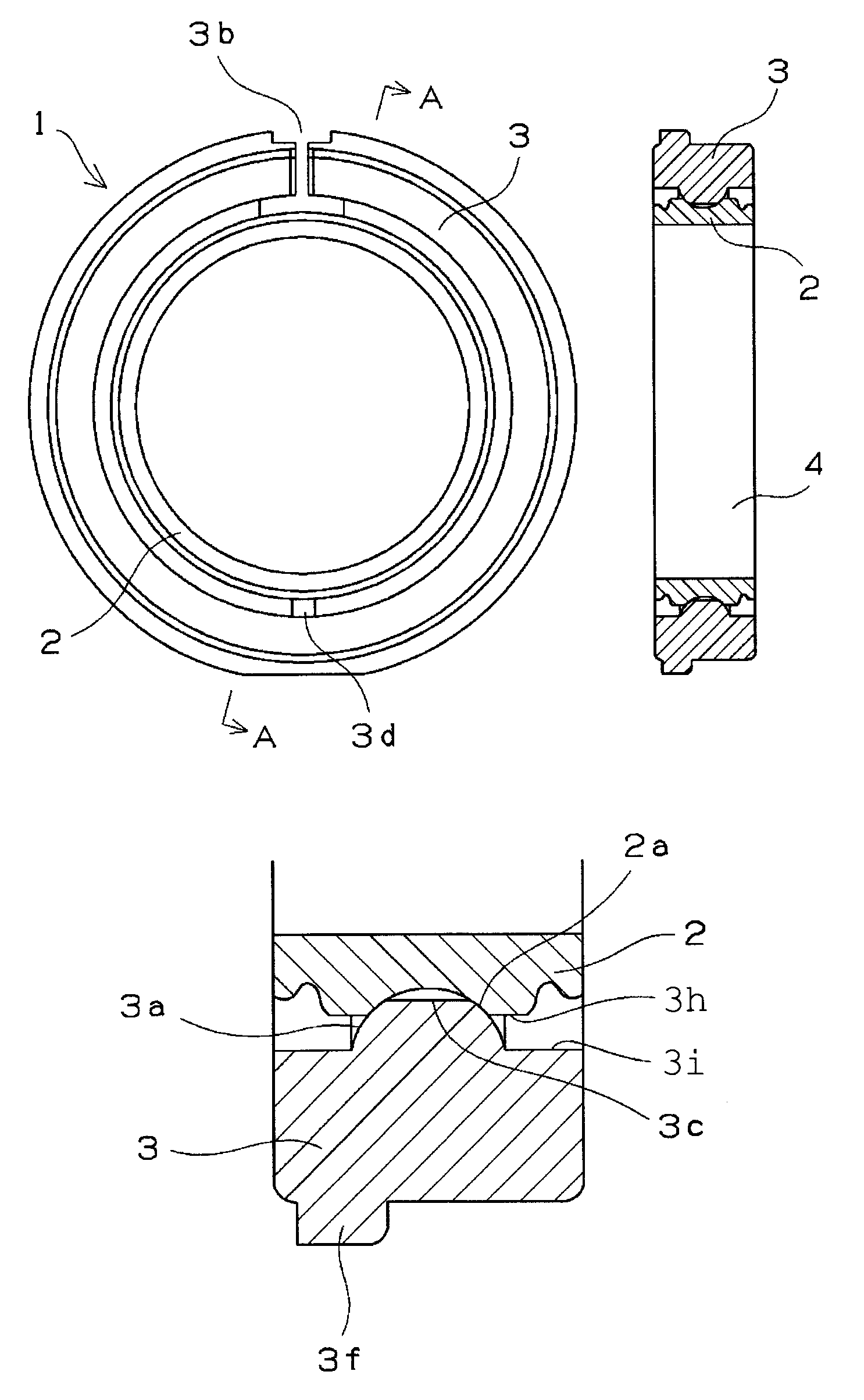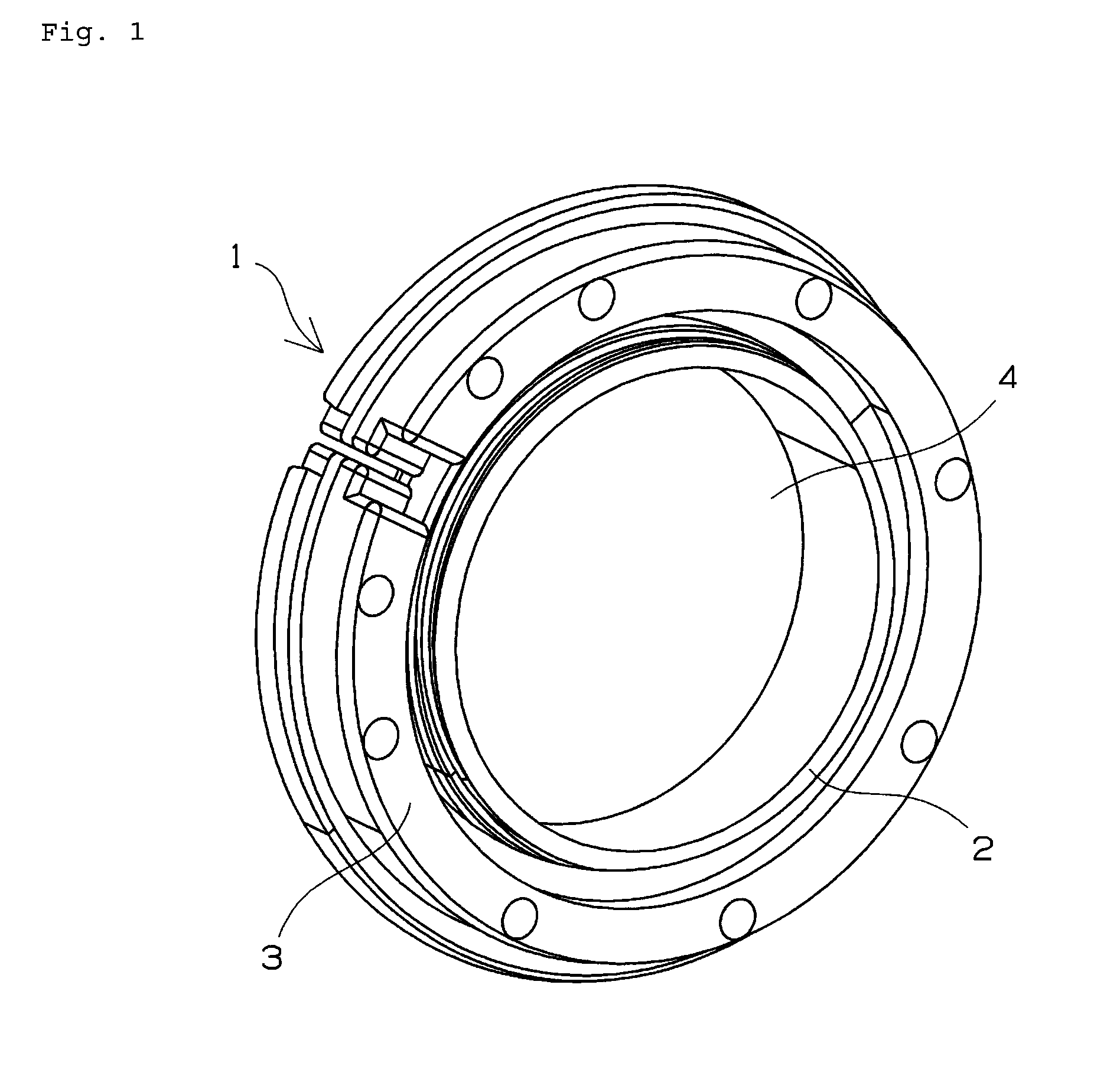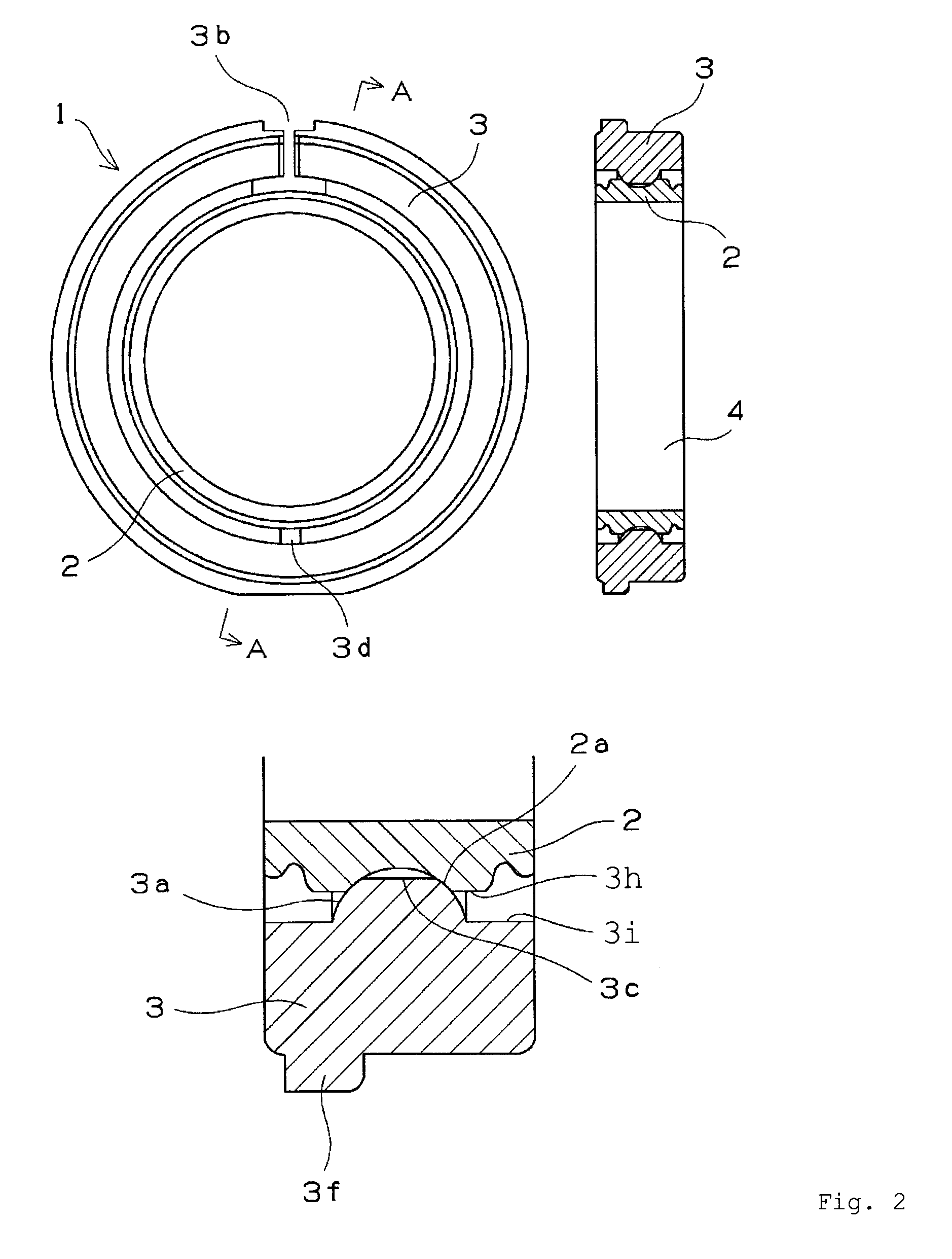Sliding bearing and image forming apparatus
a technology of sliding bearings and image forming apparatus, which is applied in the direction of sliding contact bearings, electrographic processes, instruments, etc., can solve the problems of increased cost, increased uniformity, and complex structure of the groove ball bearings serving as bearings for the heated roller of the fuser device in the image forming apparatus described above, so as to reduce the lubricating power and improve the surface precision. , the effect of improving the stability of the friction torqu
- Summary
- Abstract
- Description
- Claims
- Application Information
AI Technical Summary
Benefits of technology
Problems solved by technology
Method used
Image
Examples
examples 1-8
[0199]Using an injection-molded resin article for the outer ring and a machined (turned, ground) article of melt-cast metal as the inner ring, grease was interposed between the inner and outer rings according to the arrangement shown in FIG. 1 to create a test bearing. The primary dimensions were as follows.
Inner ring: φ 25×φ 27.5 (outer circumference concave portion)×7 mm
Outer ring: φ 27.78 (inner circumference convex portion)×φ 37×7 mm
Sliding contact radius: φ 27.5 mm
[0200]The material, concavely curved surface machining method, and surface roughness of the inner ring and the material, composition, and grease type of the outer ring are shown in Table 1. The inner rings of examples 1-8 are repurposed inner rings for 6805 ball bearings, with finished products being used as the inner rings of examples 1-3 and 6-8 and unfinished products being used as the inner rings of examples 4 and 5. 0.3 g grease was applied to the entire sliding surfaces (both sides) of the inner and outer rings,...
examples 9 through 13
[0218]Sliding bearings for use in food product machine applications were rated. The test bearing used for these examples was the sliding bearing having the configuration shown in FIG. 1, the outer ring being an injection-molded resin article, and the inner ring being a repurposed inner ring for a 6805 ball bearing and being a machined article (surface roughness Ra 0.03 μm) made of SUS 440C stainless steel. The primary dimensions were as follows.
Inner ring: φ 25×φ 27.5 (outer circumference concave portion)×7 mm
Outer ring: φ 27.78 (inner circumference convex portion)×φ 37×7 mm
Sliding contact radius: φ 27.5 mm
[0219]The convex portions on the inner circumferences at the joints in the outer rings were not formed within ranges of ±10° with respect to the joints, and the two ends of the convex portions formed 45° angles with respect to the tangent lines of the inner circumferences of the outer ring, as shown in FIGS. 2 and 5. The radius of curvature of the concavely curved surface on the o...
PUM
| Property | Measurement | Unit |
|---|---|---|
| Ra | aaaaa | aaaaa |
| volume resistivity | aaaaa | aaaaa |
| temperature | aaaaa | aaaaa |
Abstract
Description
Claims
Application Information
 Login to View More
Login to View More - R&D
- Intellectual Property
- Life Sciences
- Materials
- Tech Scout
- Unparalleled Data Quality
- Higher Quality Content
- 60% Fewer Hallucinations
Browse by: Latest US Patents, China's latest patents, Technical Efficacy Thesaurus, Application Domain, Technology Topic, Popular Technical Reports.
© 2025 PatSnap. All rights reserved.Legal|Privacy policy|Modern Slavery Act Transparency Statement|Sitemap|About US| Contact US: help@patsnap.com



